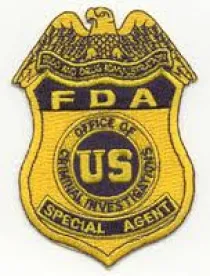FDA updates its recommendations for distribution of reprints, making requirements more specific and addressing additional types of materials typically distributed.
The Food and Drug Administration (FDA) has released updated recommendations for the distribution of scientific and medical publications (the New Reprint Guidance).[1] In addition to journal articles, the New Reprint Guidance now includes reference to two additional categories of materials—medical reference texts and clinical practice guidelines (CPGs). Although many companies have distributed these types of materials under the 2009 final guidance on Good Reprint Practices[2] (which is likely to be superseded by the New Reprint Guidance) and based on policy evident from warning and untitled enforcement letters, industry now has a new and improved checklist of reasonableness and independence to use to assess its materials. This will mean comparing existing reprint materials in distribution—and, indeed, a review of plans to distribute such materials, more generally, in the future—against a new set of more explicit “dos” and “don’ts.” For instance, the New Reprint Guidance explicitly permits distribution of select chapters of medical reference texts and select sections of CPGs. The New Reprint Guidance also serves as an initial response to recent public FDA inquiries regarding FDA’s position on the parameters of permissible scientific exchange.[3]
Overview of the New Reprint Guidance
FDA mentions in the New Reprint Guidance—and all guidance documents— that the guidance merely “represent[s] the FDA’s current thinking on a topic” and “do[es] not operate to bind FDA or the public.” However, in the New Reprint Guidance, FDA takes a comparatively strong tone in the Background section with this reminder:
The evolution of drug and medical device regulation . . . has been shaped by experience with the real and substantial risks to the public from uses of drugs and medical devices not shown to be both safe and effective.
FDA also reiterates that its process of approving labeling, based on the results of adequate and well-controlled clinical studies, is the best way to protect against these risks.
As it did in the 2009 Good Reprint Practices guidance and in prior law, FDA does acknowledge in the New Reprint Guidance that “the public health may benefit when health care professionals receive truthful and non-misleading scientific or medical publications on unapproved new uses,” and that FDA “recognizes the value to health care professionals of truthful and non-misleading scientific or medical publications on unapproved new uses.” However, these acknowledgements of the utility of lawful scientific exchange are consistently tempered with limitations, such as the reminder that
this information is in no way a substitute for the FDA premarket review process, which allows FDA to be proactive, rather than reactive, in protecting the public from unsafe or ineffective medical products.
The lengthy Background section (which makes up about a quarter of the guidance) also provides the framework for FDA’s analysis of the issue of establishing a manufacturer’s “intended use,” mentioning the concept numerous times throughout the document. The New Draft Guidance somewhat emphatically reminds industry that
[t]o establish a manufacturer’s or distributor’s intended use for [a] product, FDA is not bound by the manufacturer’s or distributor’s subjective claims of intent, but rather can present objective evidence [of that intended use], which may include a variety of direct and circumstantial evidence.
This evidence includes reprints and other off-label information or claims disseminated by the manufacturer. As industry knows too well, this concept of “intended use” is not only important from the standpoint of FDA’s misbranding prohibitions, but it also is relevant in the context of other legal challenges.
Is there a reason for this rather hefty reminder of the value in FDA’s review process and general requirements with respect to product promotion? Consider that the New Reprint Guidance is issued on the heels of
-
ongoing comments on the 2009 Good Reprint Practices guidance, including two citizen petitions[4] asking FDA to clarify its position on the distribution of CPGs, off-label uses, and preapproval communications;
-
a docket that FDA opened to specifically request comments on the principles of scientific exchange; and
-
the decision in United States v. Caronia[5] (where, based on First Amendment principles, a divided Second Circuit panel vacated the conviction of a pharmaceutical sales representative who had promoted off-label uses of a prescription drug), among other legal challenges to FDA over the years.
Indeed, the Federal Register notice[6] issued along with the New Reprint Guidance indicates that the guidance is issued as a first step in responding to the citizen petitions and other requests for clarification that FDA has received on the topic. The notice also indicates that, in response to those requests and comments FDA received regarding both the 2009 Good Reprint Practices guidance and its 2011 draft guidance on Responding to Unsolicited Requests for Off-Label Information,[7] FDA is
considering a range of options for responding to questions about industry participation in scientific discussions and for addressing industry dissemination of new scientific information related to approved or cleared uses of marketed drugs and devices,
including responding to unsolicited requests for off-label information, industry interaction with formulary committees, and exchange of scientific information on off-label uses, generally.
Implications
With this background in mind, the New Reprint Guidance may signal that FDA is better positioned to take enforcement against manufacturers that run afoul of the more detailed recommended practices. The New Reprint Guidance also may suggest that FDA is prepared to respond to future legal challenges to its long-standing framework of rules for dissemination of off-label information.
While industry is left to consider this and other potential implications of the New Reprint Guidance, in the short term, it faces the task of ensuring that review processes for the dissemination of reprints continue to confirm that the reprints and other materials disseminated under the New Reprint Guidance meet the following criteria:
-
They are not false or otherwise misleading.
-
They do not recommend or suggest use of a product in such a way that the product is dangerous to health when used in the manner suggested.
-
They are not marked, highlighted, summarized, or characterized by the manufacturer, in writing or orally, to emphasize or promote an unapproved use.
The New Reprint Guidance also provides tailored checklists for the dissemination of scientific or medical reference texts and CPGs. These checklists include, for instance, requirements that the latest versions of the materials be distributed. With respect to CPGs, specifically, FDA outlines requirements for ensuring that CPGs are “trustworthy,” including, for instance, requirements that the CPG be based on a systematic review of the existing evidence (i.e., rather than just reflective of the preferences of a narrower committee of professionals) and, likewise, that it must be part of an ongoing revision process based on evidence.
Although these additional areas of guidance are generally consistent with those discussed above, they are more detailed and consider the differences in these types of publications as compared to shorter items like journal articles, and the guidance will no doubt result in a considerable reshuffling of industry’s current and future plans for the dissemination of off-label information falling into any of these three broad categories. The agreement to allow distribution of CPGs in particular will be considered a welcome expansion of the reprint exemption, as CPGs, which generally represent the endorsement of relevant professional medical societies, carry significant weight with healthcare providers.
FDA is requesting that comments to the New Reprint Guidance (which is in draft form) be submitted by May 2, 2014 in order to be considered as the agency prepares the final version of the document.
[1]. FDA, Guidance for Industry: Distributing Scientific and Medical Publications on Unapproved New Uses—Recommended Practices (Draft, Feb. 2014).
[2]. FDA, Guidance for Industry: Good Reprint Practices for the Distribution of Medical Journal Articles and Medical or Scientific Reference Publications on Unapproved New Uses of Approved Drugs and Approved or Cleared Medical Devices (Jan. 2009).
[3]. See, e.g., July 2011 Citizen Petition FDA-2011-P-0512, available here; September 2013 Citizen Petition FDA-2013-P-1079, available here.
[4]. Id.
[5]. 703 F.3d 149 (2d Cir. Dec. 3, 2012).
[6]. 79 Fed. Reg. 11793–96 (Mar. 3, 2014).
[7]. FDA, Draft Guidance for Industry: Responding to Unsolicited Requests for Off-Label Information About Prescription Drugs and Medical Devices (Dec. 2011), available here.



 />i
/>i


